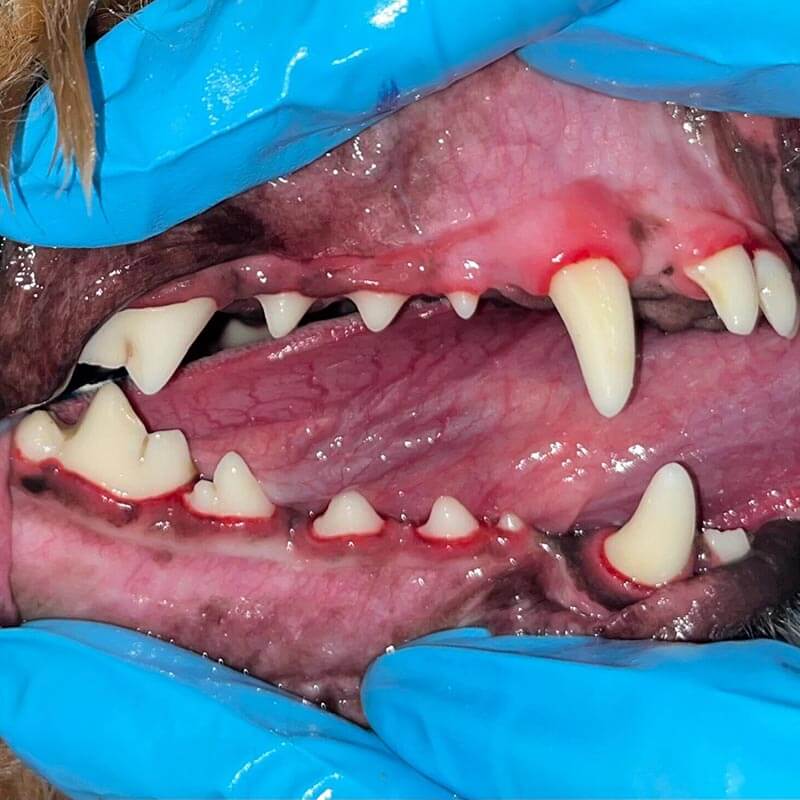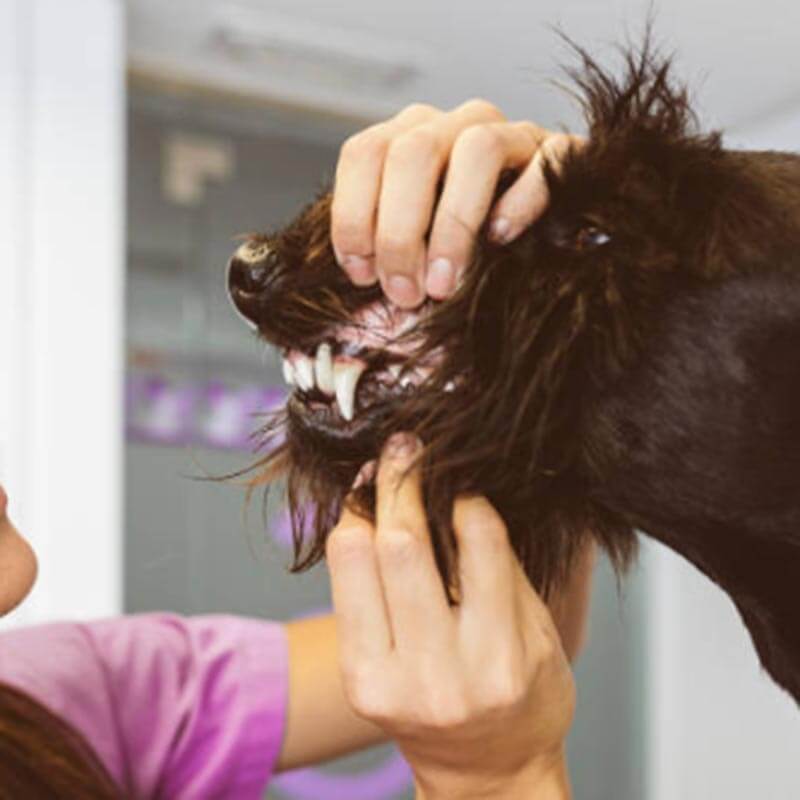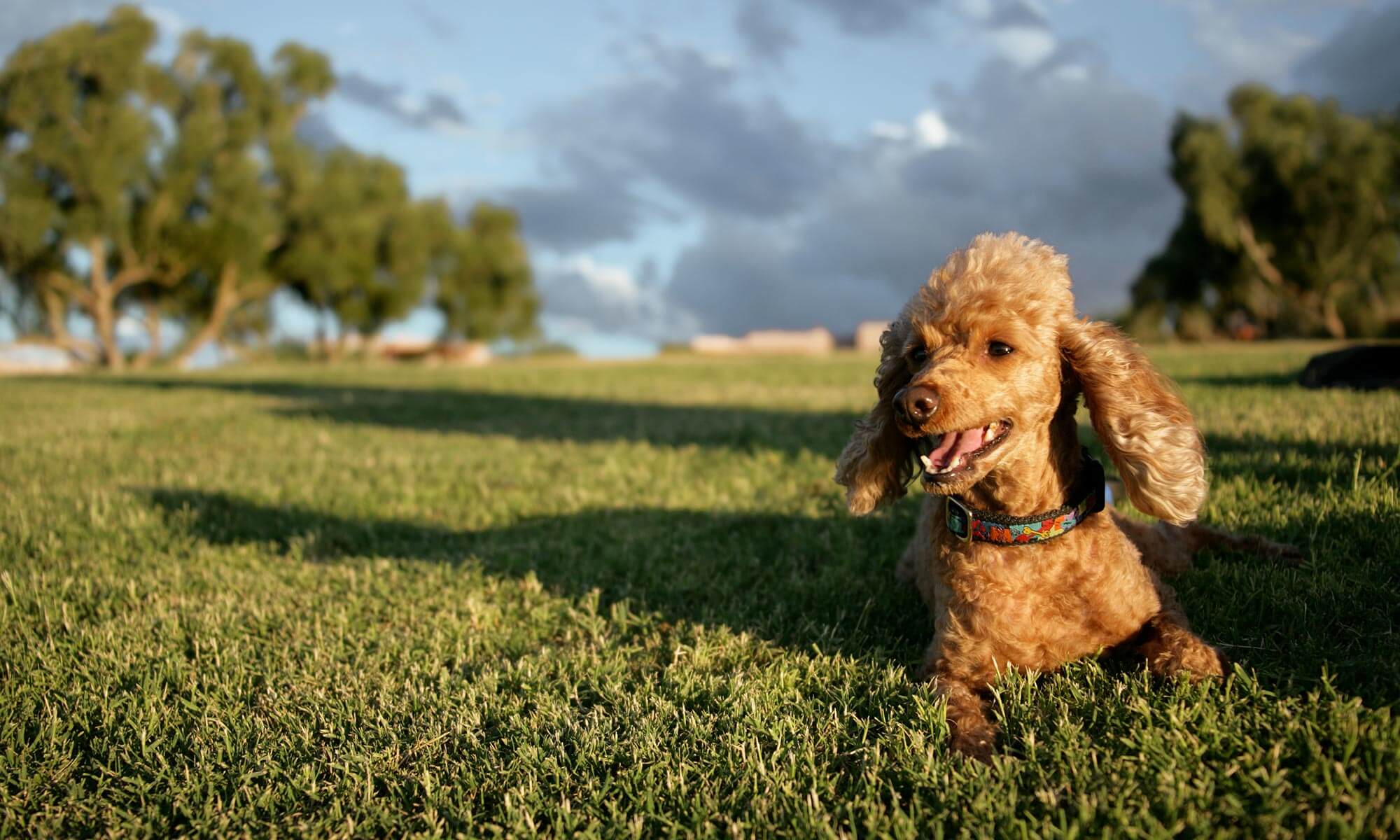Comprehensive Pet Dental Health Care

Dental disease is an often overlooked threat to the comfort and health of your pet. Because dental disease often has few readily apparent signs, we often only spot it during routine yearly examinations. Following this exam at Animal Medical Hospital & Urgent Care, your veterinarian may recommend a particular dental cleaning schedule, oral care routine, or special treatment based on your pet’s dental health needs.
How Do I Know If My Pet Has Dental Disease?
- Bad breath
- Yellow, brown, or discolored teeth
- Loose teeth
- Red, inflamed gums
- Swollen mouth, jaws, or gums
- Pain when eating
- Doesn’t play with chew toys as often
If you suspect your pet may be experiencing dental disease, call to schedule a pre-dental consultation with one of our veterinarians. During your consultation, your pet will receive a full oral examination, and your veterinarian will go over their findings.

Important Information for Your Pet’s Teeth Cleaning:
- Please ensure your pet’s last meal is at 8:00 p.m. the day before their teeth cleaning. For your pet's safety, food must be withheld until after their teeth cleaning. Water is okay to leave out.
- Drop off time is from 7:00 a.m. to 7:30 a.m.
- Please notify us of any medications given 24 hours prior to their teeth cleaning.
- At drop off, allow us a moment to go over paperwork and answer any questions you may have.
- We will call you after your pet has recovered from anesthesia, but you are still welcome to call and check in.
What happens after drop off?
- Your pet is brought to our dental suite to start the process.
- We place an IV Catheter
- Your pet is sedated and connected to equipment to monitor their heart, lungs, saturation levels, temperature, and blood pressure.
- Your pet’s dedicated anesthesia nurse is assigned to monitor your pet throughout his or her teeth cleaning process, from placing them under anesthesia, to monitoring during the surgical procedure, and evaluating their recovery from anesthesia.

Dental Care at Home
It’s important to establish a regular teeth cleaning routine at home in addition to scheduling professional teeth cleaning with your veterinarian. Consistently caring for your pet’s dental health on a daily basis can help slow down the formation of plaque and tartar. A few products our doctors recommend are:
- Oravet Chews
- Hill's® Science Diet® Oral Care food
- C.E.T Enzymatic Toothpaste and Toothbrush
- Dental Chews
- Oral Care Wipes
- Tartar Shield Water additive

